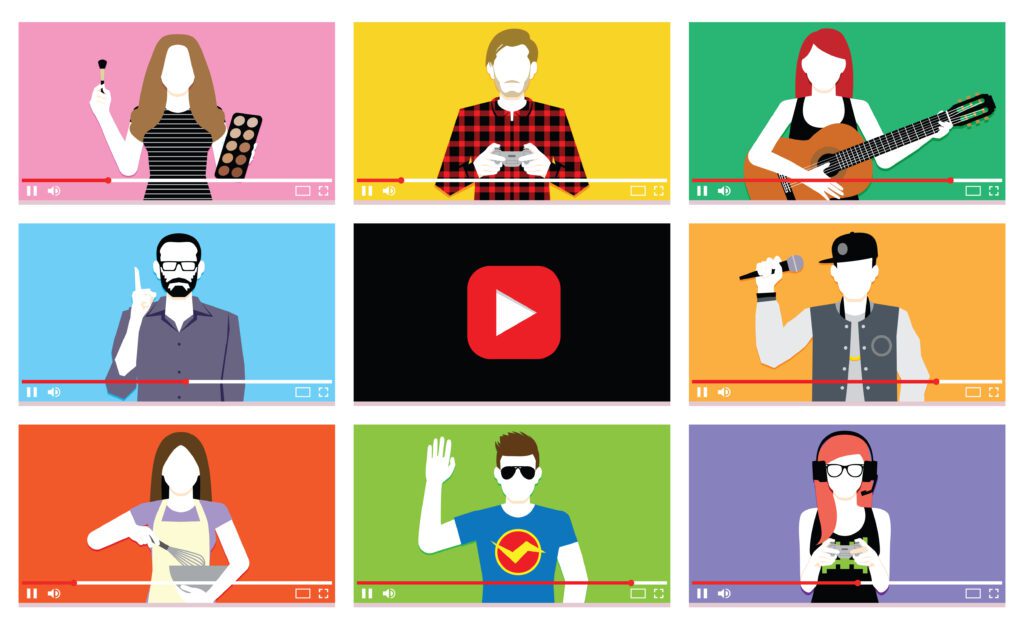It’s an influencer world; we’re just living (and advertising) in it.
Content creators have become a powerful force in the social media landscape, yet many advertisers are only just beginning to figure out how to collaborate with them effectively.
Influencer budgets were often tiny, if they existed at all, and brands struggled to measure the ROI of their influencer campaigns.
It was against this background that influencer ad platform Agentio was founded in 2023 to help brands navigate the complexities of launching successful campaigns with creators.
By the buy
Agentio uses AI to connect advertisers with content creators on YouTube whose audiences match a brand’s target demographics through an automated bidding process.
Advertisers can determine how much money they’re willing to commit, and Agentio’s automated marketplace connects them with relevant creators while ensuring they don’t overspend.
If this sounds awfully familiar, yes, it’s basically a programmatic buy for influencer content, Jonathan Meyers, Agentio’s CTO and co-founder, told AdExchanger.
But the key difference between Agentio’s system and the traditional programmatic marketplace is that the “publisher” is a real person. That is, every creator must actively decide whether they want to partner with the brands that are recommended to them.
Agentio’s tools are designed to support brands, of course, but also creators, who have historically made minimal revenue from ads.
Influencer budgets tend to be much smaller than paid media budgets, which are practically “unlimited,” said Arthur Leopold, CEO and co-founder of Agentio, because brands are confident that paid media pays off and scales. Influencers, on the other hand, are in far more limited supply. A brand trying to spend the same amount on influencers as it does on paid media, well, as Leopold put it, “good luck.”
Agentio relies on AI tools, including Gemini and ChatGPT, to analyze video content and match creators with relevant products, like finding videos in which the creator is wearing glasses, which could be good for a partnership with Warby Parker. The AI can also evaluate audio content and suggest relevant products for partnerships based on the topics in the video.
When creators sign on to work with Agentio, they fill out a detailed survey of their interests and what products they use, so Agentio can “better understand where there are opportunities” to connect them with brands, Leopold said.
Keeping up with the times
In the past, however, creator content didn’t scale. Trying to build relationships with creators was an “opaque” process that made success “almost impossible,” said Leopold.
Brands would have to manually identify creators they believed would suit their products and reach out to them cold. Often, this outreach was fruitless, because advertisers are biased to think creators they frequently engage with are inherently better fits, Leopold noted.
While it might be true that brands are inclined to engage with creators who share their values and interests, they also just might be engaging with creators who are more well-known and don’t specifically suit their brand, feeding into the mere-exposure effect (or, favorable bias due to familiarity with something).
Unsurprisingly, the cold-outreach system didn’t yield great results. Brands rarely received responses, and when they did, the creator would often try to “drive as much friction as possible to increase the price,” Leopold said.
And when brands did partner with creators, he added, it was challenging to track, since they often didn’t have the necessary tools or first-party data to give a clear picture of the campaign’s impact. They could track a few metrics, such as last-click conversions, but not the total impact.
Agentio’s measurement tools allow brands to see the direct effects of their campaigns through a dashboard that resembles Google Ads and Meta Ads Manager, Meyers said. The dashboard tracks KPIs including views, clicks, conversions and ROAS.
Sock it to ‘em
In a recent partnership between Agentio and Bombas, the sock brand saw a 90% lift in net-new customers.
It used Agentio’s contextual recommendation algorithm to identify content creators who had mentioned its product before – either by name or industry – which can be a sign of authentic interest and relevance.
From there, Bombas was able to find creators with genuine affinity for its brand and create ads that felt specific and personalized. In one ad, creator Natalie Gold dumps out an entire basket of Bombas socks, admitting that the pile is just a fraction of her collection. The ad was completely organic, said Leopold, devised and executed by Gold.
Creators are the ones who drive engagement on social media, said Leopold, but they typically only get “a fraction of the overall spend.”
Indeed, while roughly $600 billion in digital ad budgets go to social platforms, only around $10 billion of that amount goes directly from brands to creators.
That’s changing, though.
As the creative landscape continues to become more focused on influencer content, Leopold predicts that 50% of global marketing spend will “eventually be shifted to creators.”













